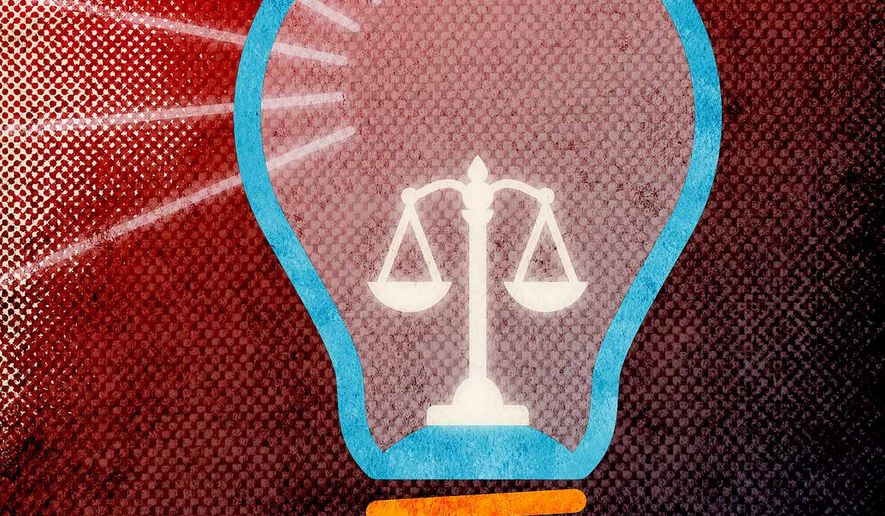OPINION:
In Supreme Court session postmortems, don’t expect mention of any change in course from the vast injury it’s inflicted over the past dozen years on patent eligibility.
Why does this matter? Because the high court has done as much or more than anything to give China an advantage in innovation and industrial competitiveness over the United States.
The National Security Commission for Artificial Intelligence recently reported that China is “fill[ing] the void” left by weakened U.S. intellectual property and unreliable IP rights in AI and other strategic technologies. The global leader in emerging tech is up for grabs, and it’s linked to patent protection.
The NSCAI notes with urgency how China’s expansive patentability rules contrast with current U.S. uncertainty as to what’s patentable. The report calls attention to the “stark policy asymmetry” between the U.S. and Chinese IP policy — which stands in China’s favor.
Judicial and PTAB invalidation of U.S. patents threatens our national security, economy, and technological innovation. The NSCAI warns of our loss of “stable and effective property rights in new technological innovation.” It points the finger at the present patent eligibility doctrine.
Judicially created exceptions to patent eligibility heavily affect computer-implemented inventions and biotechnology. This court-induced restriction and volatility hold grave implications for America’s dominating or lagging in AI and such areas as 5G, quantum computing, and medical diagnostics.
It wasn’t always like this. U.S. patent law designates as patentable “any new and useful process, machine, manufacture, or composition of matter, or any new and useful improvement thereof” that a person “invents or discovers.” Courts have long deemed laws of nature, abstract ideas, and natural phenomena as unpatentable. That’s where courts have run hog-wild lately.
The Supreme Court narrowed patent eligibility in Bilski v. Kappos in 2010, Mayo Collaborative Services v. Prometheus in 2012, Association for Molecular Pathology v. Myriad Genetics in 2013, and Alice Corp. v. CLS Bank in 2014. Bilski and Alice make it difficult to protect computer-enabled software inventions, conflating this innovation with “abstract ideas.” Mayo and Myriad confuse life sciences inventions with laws of nature.
Note that such inventions used to be patent-eligible in America and remain patentable in China, Europe, and elsewhere.
What’s this legislating from the bench done? Former Patent & Trademark Office director and former IBM IP executive David Kappos finds that Alice has “caused a nearly four-times increase in patent invalidation based on subject matter eligibility.”
Law firm Gibson Dunn tallied up courts’ property destruction rates as of 2019. Courts invalidated more than twice as many software patent claims under Alice as they upheld. They wiped out a quarter more patent claims in life sciences than they deemed eligible.
Uncertainty surrounding issued patents’ eligibility, and their shrinking likelihood of surviving challenge, has soured investors on critical technologies. The Alliance of U.S. Startups and Inventors for Jobs finds that “venture capital investment decisively shifted away from patent-intensive industries” between 2004 and 2017.
VC funding of semiconductors, medical diagnostics, computer equipment, and the like fell from greater than 50 percent to below 30 percent over that period.
A survey of investors similarly found VCs’ heightened attention to patent eligibility risks. Respondents avoid investing in a firm when there’s patent eligibility risk exposure.
Mr. Kappos joined ranking IP Subcommittee Republican Sen. Thom Tillis and former chief judge of the Federal Circuit Paul Michel on an amicus brief this spring asking the Supreme Court to take American Axle & Manufacturing v. Neapco Holdings.
The amici observed, “Since [the Supreme Court in] Mayo and Alice imposed a framework, Alice/Mayo has been applied differently and questions of its extent, scope, and rigidity have been common, and are at issue in American Axle.”
This is the case the Federal Circuit’s now-Chief Judge Kimberly Moore criticized. “The majority’s validity goulash is troubling and inconsistent with the patent statute and precedent,” Judge Moore said. “The majority worries about result-oriented claiming; I am worried about result-oriented judicial action.”
Ms. Moore’s “validity goulash” phrase sums up the state of judicially screwed-up patent eligibility law.
The U.S. Senate recently passed legislation geared toward countering China in emerging technologies. That legislation leaves patent eligibility as untenable a mess as the Supreme Court, lower courts, and the Patent Trial & Appeal Board have made.
If you prefer a future where America rather than China leads the world in innovation, broad patentability standards and reliable, enforceable IP rights should be your top priority. Our competitiveness, innovation edge, national security, and economic prosperity hang in the balance.
• James Edwards, Ph.D., is executive director of Conservatives for Property Rights (@4PropertyRights) and patent policy advisor to Eagle Forum Education and Legal Defense Fund. The views expressed are his own.




Please read our comment policy before commenting.